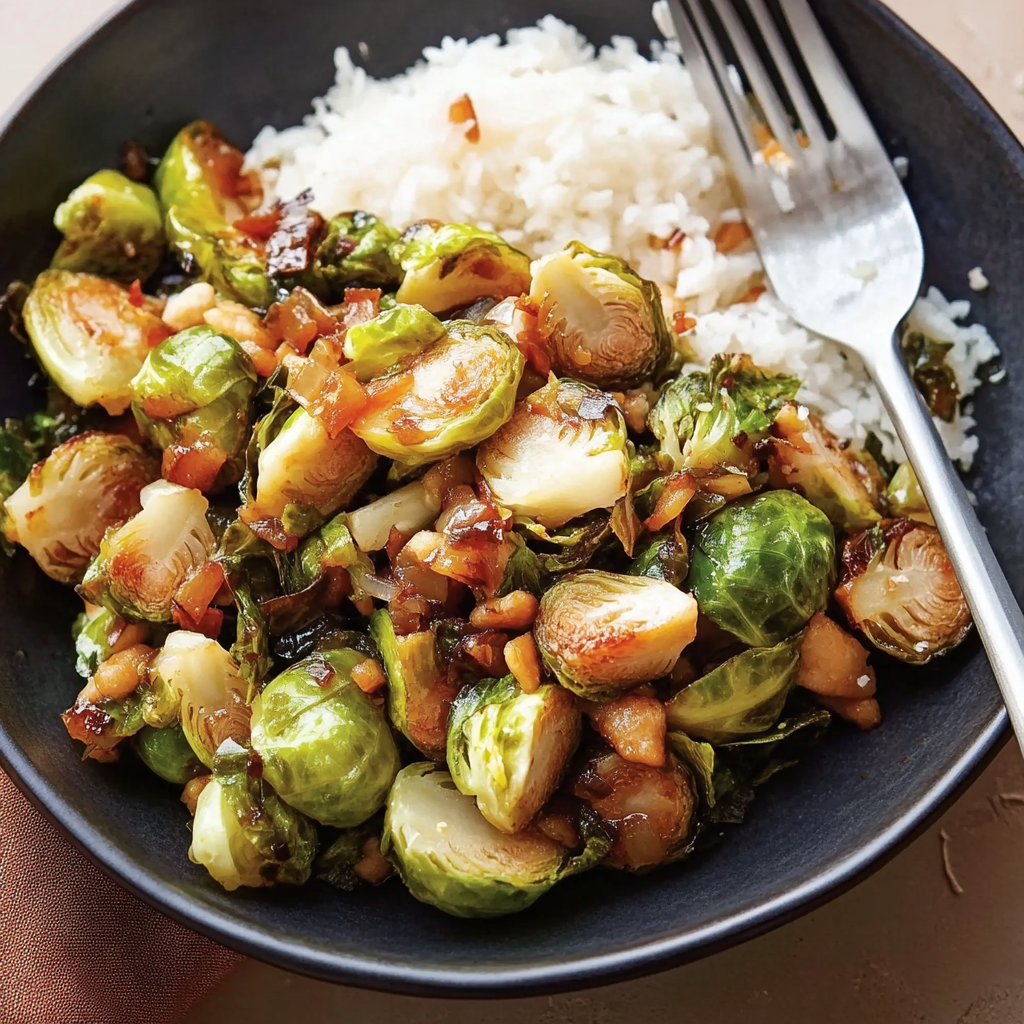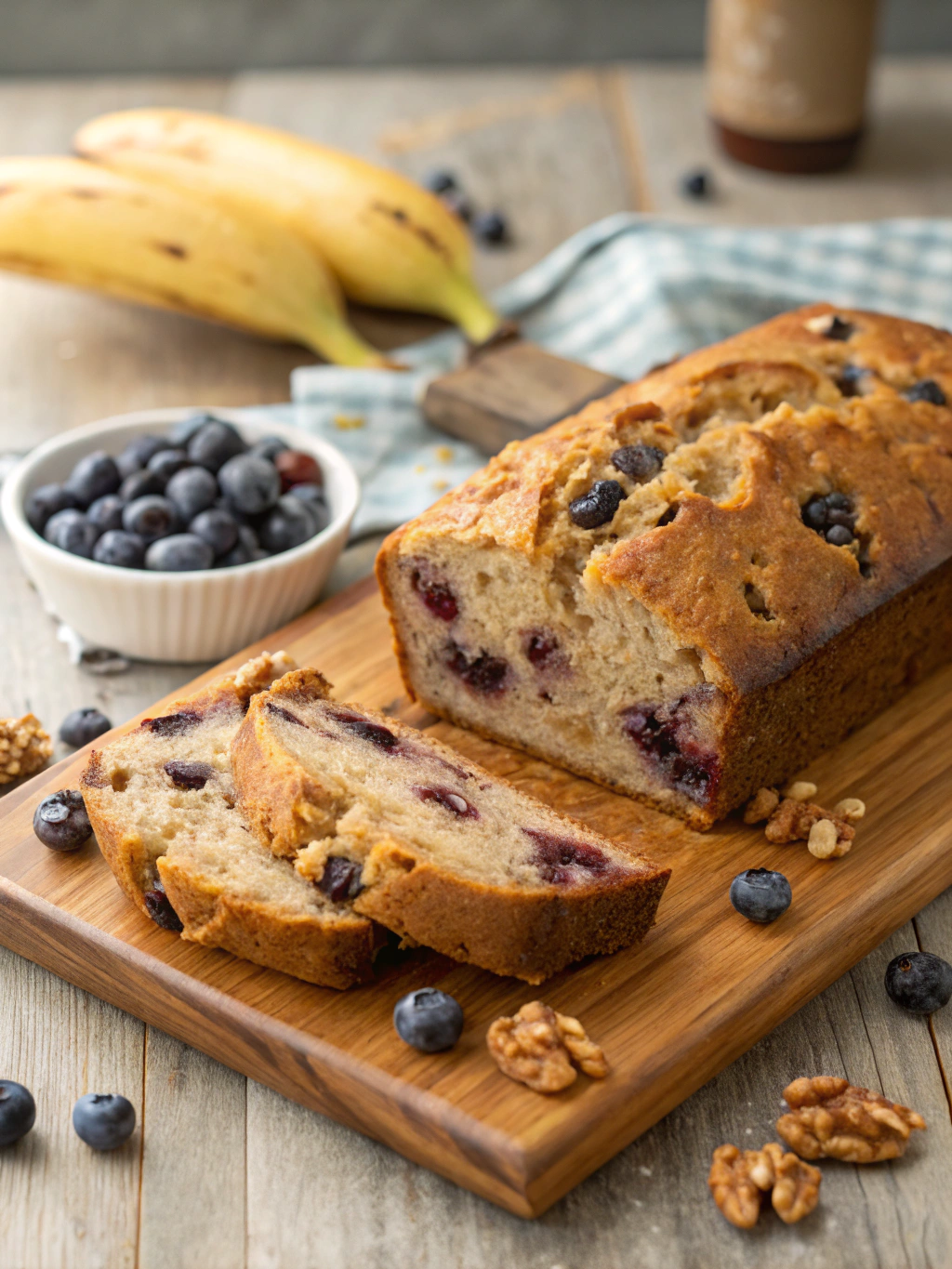Sharing is caring!
Brussels Sprouts Stir-Fry
Why You’ll Love Brussels Sprouts Stir-Fry?
Brussels sprouts stir-fry is a game-changer for quick, healthy meals. Packed with flavor and ready in just 20 minutes, this dish transforms humble Brussels sprouts into a crispy, savory delight. Whether you’re looking for a nutrient-dense side or a light vegetarian main, this stir-fry delivers. The caramelized edges of the sprouts pair perfectly with garlic, soy sauce, and a hint of spice—making it a crowd-pleaser for weeknight dinners or meal prep. Plus, it’s a fantastic way to enjoy seasonal produce. If you love vibrant, easy-to-make dishes, you’ll adore this turmeric-infused twist on greens.
Table of Contents
- Ingredients to make Brussels Sprouts Stir-Fry
- Time needed to make brussels sprouts stir fry
- Quick Steps to Make Brussels Sprouts Stir-Fry
- Is brussels sprouts stir fry healthy and nutritious
- Can I make brussels sprouts stir fry healthier and still delicious
- How to Serve Brussels Sprouts Stir-Fry
- Avoid These Mistakes
- The best way to store leftover brussels sprouts stir fry
- Ready to give brussels sprouts stir fry a try
- Frequently Asked Questions
Ingredients to make Brussels Sprouts Stir-Fry
- 1 lb Brussels sprouts, trimmed and halved
- 2 tbsp olive oil
- 3 cloves garlic, minced
- 1 tbsp fresh ginger, grated
- 2 tbsp soy sauce (or tamari for gluten-free)
- 1 tbsp honey (or maple syrup for vegan option)
- 1 tbsp rice vinegar
- 1 tsp sesame oil
- 1/4 tsp red pepper flakes (optional for heat)
- 1/4 cup water or vegetable broth
- 1 tbsp sesame seeds (for garnish)
- 2 green onions, sliced (for garnish)
Time needed to make brussels sprouts stir fry
This quick and flavorful brussels sprouts stir fry comes together in just 20 minutes! Here’s the breakdown:
- Prep time: 10 minutes (trimming sprouts, chopping ingredients)
- Cook time: 10 minutes (stir-frying to perfection)
- Total time: 20 minutes
Perfect for busy weeknights when you need a healthy meal fast. For more quick meal ideas, check out this energizing juice boost detox recipes to pair with your stir fry.
Quick Steps to Make Brussels Sprouts Stir-Fry
Step 1: Prep Your Brussels Sprouts
Trim the stems and remove any wilted outer leaves. Slice them thinly for even cooking or halve them for a chunkier texture. Rinse under cold water and pat dry.
Step 2: Heat Your Pan
Place a large skillet or wok over medium-high heat. Add a drizzle of olive oil or sesame oil and let it heat until shimmering—about 1 minute.
Step 3: Sauté Aromatics
Add minced garlic and grated ginger to the hot oil. Stir for 20–30 seconds until fragrant but not browned. For extra flavor, toss in sliced onions or chili flakes.
Step 4: Cook the Brussels Sprouts
Add the prepared Brussels sprouts to the pan. Stir-fry for 5–7 minutes until they start to soften and develop a slight char. Keep the heat high to avoid steaming.
Step 5: Season & Finish
Drizzle with soy sauce or tamari, a splash of rice vinegar, and a pinch of sugar or honey. Toss well. For crunch, sprinkle toasted sesame seeds or chopped nuts before serving.
Is brussels sprouts stir fry healthy and nutritious ?
Brussels sprouts stir fry is packed with essential nutrients, making it a powerhouse of health benefits. A single serving provides a rich dose of fiber, vitamins C and K, and antioxidants that support digestion and immunity. For those looking to boost their nutrient intake, pairing this dish with an energizing juice can amplify its benefits.
This stir-fry is naturally low in calories but high in flavor, thanks to the caramelization of brussels sprouts. If you’re exploring other nutrient-dense meals, consider adding a detox spinach salad to your menu for a well-rounded meal. For more protein-packed stir-fry ideas, check out this beef stir-fry recipe or this Cuban black beans dish for plant-based alternatives.
Can I make brussels sprouts stir fry healthier and still delicious?
Absolutely! With a few smart swaps, you can enjoy a lighter version of this brussels sprouts stir fry without sacrificing flavor. Try using avocado oil instead of vegetable oil—it has a higher smoke point and heart-healthy fats. For a lower-sodium option, swap soy sauce with coconut aminos or a homemade tamari blend.
Want to boost the protein? Add tofu or tempeh for a plant-based twist, or lean chicken for a meaty option. If you’re watching carbs, serve your brussels sprouts stir fry over quinoa instead of rice. For extra crunch without excess oil, try dry-roasting nuts or seeds as a topping.
Looking for more veggie-packed ideas? Check out this guide to stir-fry variations or explore protein-rich sides to balance your meal. Small changes make a big difference!
How to Serve Brussels Sprouts Stir-Fry?
This vibrant brussels sprouts stir fry pairs beautifully with a variety of sides and drinks. For a balanced meal, serve it over steamed jasmine rice or quinoa for extra fiber. If you’re craving something heartier, try it alongside beef stir-fry for a protein-packed combo.
For a refreshing contrast, pair it with a light detox spinach salad or a tangy turmeric salad. A chilled glass of kiwi agua fresca or spiced iced tea complements the dish’s savory notes perfectly.
Garnish tip: Sprinkle toasted sesame seeds or crushed peanuts for added crunch, or drizzle with a touch of sriracha for heat lovers.
Avoid These Mistakes
Making a perfect brussels sprouts stir fry is easy, but a few common errors can ruin the dish. Here’s what to watch out for:
Overcrowding the Pan
If you add too many brussels sprouts at once, they’ll steam instead of crisp up. Cook in batches if needed for even browning. For more stir-fry tips, check out this guide to perfect stir-frying.
Underseasoning
Brussels sprouts need bold flavors. Don’t be shy with garlic, soy sauce, or spices. Pair it with an anti-inflammatory turmeric salad for extra flavor.
Overcooking
Mushy sprouts lose their appeal. Cook just until tender-crisp (about 5-7 minutes). For perfectly cooked veggies, try techniques from this 15-minute black beans recipe.
Skipping the Prep
Trim stems and halve sprouts uniformly for even cooking. Need quick veggie prep ideas? Our detox spinach salad has great tips.
The best way to store leftover brussels sprouts stir fry
To keep your brussels sprouts stir fry fresh, store it in an airtight container in the fridge for up to 3 days. For longer storage, freeze it in portion-sized containers for up to 2 months. When reheating, a quick stir-fry in a pan with a splash of water or oil helps retain texture. Avoid microwaving directly to prevent sogginess. For more tips on preserving veggies, check out our guide on storing leafy greens or explore best practices for stir-fry leftovers.
If you love meal prepping, pair your brussels sprouts stir fry with quinoa salads for a balanced meal. For freezer-friendly tips, this black beans guide offers great insights.
Ready to give brussels sprouts stir fry a try?
This quick and flavorful brussels sprouts stir fry is a game-changer for busy weeknights or when you crave something nutritious yet delicious. Packed with crispy textures, savory notes, and a hint of caramelization, it’s a dish that even sprout skeptics will love. If you enjoyed this recipe, explore more detox-friendly salads or pair it with our kale quinoa salad for a complete meal. For extra inspiration, check out our turmeric-infused dishes or energizing juice recipes to round out your healthy eating plan. Happy cooking!
Frequently Asked Questions
Can I use frozen Brussels sprouts for this stir-fry?
Yes, frozen Brussels sprouts work well. Thaw and pat them dry before cooking to avoid excess moisture.
How can I make this brussels sprouts stir fry spicier?
Add red pepper flakes, sriracha, or diced jalapeños during cooking for extra heat.
Is this recipe gluten-free?
Yes, if you use tamari or gluten-free soy sauce instead of regular soy sauce.
Can I add protein to this stir-fry?
Absolutely! Tofu, chicken, shrimp, or beef make great additions. Cook the protein separately first, then combine.
How long do leftovers last in the fridge?
Store in an airtight container for 3-4 days. Reheat in a skillet for best texture.
Can I meal prep this brussels sprouts stir fry?
Yes! It keeps well for 3 days. For best results, slightly undercook the sprouts if planning to reheat later.












